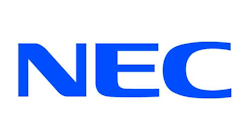When it comes to advertising, image is everything. For transportation agencies exploring digital advertising, that adage is especially true, as these agencies seek to use the vast spaces of their venues and technology to raise additional revenues.
If an advertiser is not happy about the brightness or clarity of an ad, however, then that could spell doom for the agency’s long-term digital advertising prospects.
This issue is one reason why, historically, incorporating projectors for digital signage applications in the transportation industry has been a struggle. Lamps, their traditional light source, tend to burn out quickly under the strain of long hours. They simply cannot sustain the power and brightness required to meet industry demands. This is a major problem in a high usage environment like transportation where projectors typically run 24 hours a day, seven days a week.
Replacing lamps is a costly endeavor, and translates to steep labor costs when lamps reach their end of life after 1,500 to 4,000 hours of use. And the accumulation of dust typical in projectors that use lamps further accelerates their demise.
However, laser phosphor projectors, which emit a more consistent light output over their lifetimes, are changing the game. With lasers as their light sources, these distinctly modern projectors offer up to 20,000 hours of projector life at maximum brightness.
Lamp-less projectors also offer flexibility that is a major benefit in an environment that experiences heavy foot traffic on a daily basis. They have given users more placement options for display signage installations, for example.
With their robust durability and convenient flexibility, laser phosphor projectors are positioned to shine a bright light on digital signage in the transportation industry.
As Heat Rises, Lasers Keep their Cool
Typically, there is a great deal of ambient light present in transportation environments, from sources including windows and natural light at an outdoor bus stop. Images projected onto surfaces must compete with that light. This leads to high power requirements and stress on lamps, and shortens lamp life. As a result, users have to replace lamps every month to two months. Comparing the typical eight hours per day usage of a lamp-based projector, laser lifetime will be approximately seven years longer than a single lamp.
Due to their tendency to heat up quickly, lamp-based projectors also require a high level of airflow into their cooling systems. This generates a great deal of dust and heat in the cabinets, driving up the frequency of the maintenance required to keep them clean.
Because laser phosphor projectors operate at lower temperatures, they require a lower level of airflow than lamp-based projectors. As a result, they generate less dust, reducing the cost of labor. Given the lower level of stress on the equipment, parts last longer, in turn decreasing consumption costs. Users can save even more on parts consumption costs with laser phosphor projector models that do not require filters. This spares them the cost of replacing filters every few months.
In Advertising, Appearances Matter
Clarity and color can make or break advertising relationships, particularly in the case of logo quality. Companies strive to perfect their brand identities and their logos as powerful representations of who they are.
Laser phosphor projectors optimize advertisement imagery in several ways. Their solid state light sources protect colors from degradation, preserving the integrity of the brand. They also emit maximum levels of brightness, further supporting the desired color palette.
Lamp-less projectors support image integrity in stacking applications as well by providing a safety net in the event of technology failure. When a quadrant goes out in signage that uses LCD or LED technology, it leaves a gaping hole in the image. On the other hand, laser phosphor projectors in a stacking configuration, using up to four projectors at a time, offers redundancy; the screen retains the image even if one projector fails. It is similar in concept to a light fixture that has four bulbs; if one bulb goes out, the light dims in brightness, but it continues to emit light.
Solid state light projectors also offer a uniformity that is not always possible with video walls. Their high resolutions produce a completely seamless image, whereas seams between screens break up the uniformity in a video wall.
And lamp-less projectors are ideal for a bold signage application that has proven costly in the past. For example, hardware and software edge blending, which is not available with LCD displays, creates a much longer and larger image in comparison, offering a better solution for concourse length banners.
Near or Far, Lasers have it Covered
Laser phosphor projectors give users more options for distance and placement. And in an environment where digital signage competes with a constant flow of traffic and shares space with travelers, flexibility is everything.
Zoom capabilities allow laser phosphor projectors to create larger images even when tasked with projecting from longer distances. Optional lenses, along with horizontal and vertical lens shift, allow this approach. The freedom to place the projectors at different distances is a great benefit in transportation because it creates a cleaner installation. Users can install projectors off to the side, out of the way, rather than directly in the concourse.
Some lamp-less projector models include open pluggable specification (OPS), an option slot in the chassis for media players or computers to run content. The projectors contain everything they need to emit imagery.
Lamp-less projectors offer placement flexibility in digital signage installations, in part, because they are not hampered by orientation limitations; they can transition seamlessly between portrait and landscape modes. This was not possible in the past because heat from lamps prevented users from placing projectors on their sides. Doing so also caused the lamps to flicker, which in turn produced flickering images. The ability to adapt the orientations according to user needs makes lamp-less projectors a viable alternative to flat-panel displays.
Solid state light source technology has given projectors a bold new life in transportation applications. Lasers have become a very real light-at-the-end-of-the-tunnel, illuminating the way for projectors to become formidable solutions for transportation.
Richard McPherson is the senior product manager for projectors at NEC Display Solutions.



